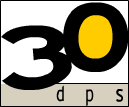Are You Using Native Advertising to Get Your Content Noticed?

As we all know, the amount of marketing content available online is skyrocketing. This, of course, is a good thing. It means that companies are working hard to start meaningful conversations with their target audience. If you are utilizing a content marketing strategy, you have made a wise decision—keep producing and promoting that compelling content.
However, as marketing guru Mark Schaefer has pointed out, we have reached the point of “content shock” or “overwhelming information density.” People are confronted with so many options, they often aren’t sure which case study to read, which video to watch, or which blog to follow. Does that mean you should rein in your content creation efforts? Absolutely not! Keep on going with it, full steam ahead! What it does means is that you’ll have to be increasingly strategic in how you get your content noticed.
Taking Advantage of Native Advertising
Native advertising is the practice of using paid ads that blend fairly seamlessly with a publisher's page content so that the reader feels the content belongs there. This can include in-feed social, recommendation widgets, promoted listings, etc. Admittedly, for marketers who climbed onboard the content marketing train in part because they wanted to cut back on paid advertising, the notion of considering native advertising may result in a bit of whiplash.
But, fear not. Nobody is encouraging you to start lobbying with the C-Suite for a large advertising budget. It simply has become apparent that smart companies should consider native advertising as one of the many ways they can get their content to stand out in an increasingly crowded content landscape. And, as native advertising is more cost-effective than traditional paid advertising, it exists as a nice middle ground between paying next to nothing and paying too much.
Tips for Getting the Most Out of Native Advertising
As you start to formulate a native advertising strategy, keep these tips in mind:
Be choosy about what you promote. If your company is actively producing loads of content, driving exposure to all of it via native advertising is probably not going to be in the budget. More substantial pieces like ebooks, white papers, and webinars might be the best candidates.
Measure carefully. With the many options available for native advertising, there are many ways a prospect can interact with your content. Should you be measuring cost per click? Cost per action? Cost per lead? You’ll want to give this some thought before you dive in. And you’ll want to make sure to set reasonable goals.
Consider target specificity. If you choose social media for your native advertising campaign, remember that how you target your audience affects the price of a campaign. Demographic, geographic, interest, and behavioral targeting are just some of your options. The more specific you are the more it will cost you, but it will also likely positively effect your ROI.
Keep experimenting. New tools, systems, and strategies are constantly being made available. In order to make your native advertising as effective and affordable as possible, you need to keep up with the evolution of native advertising.
Content is (Definitely Still) King
Your target personas still want your engaging and enlightening content; that hasn’t changed. But how you ensure they know about it is undoubtedly changing. As a leading Colorado-based content marketing agency, we can provide you with a wealth of insight on how, when, and where to get your content to the broadest possible audience. Let us know if you'd like to talk strategy.

